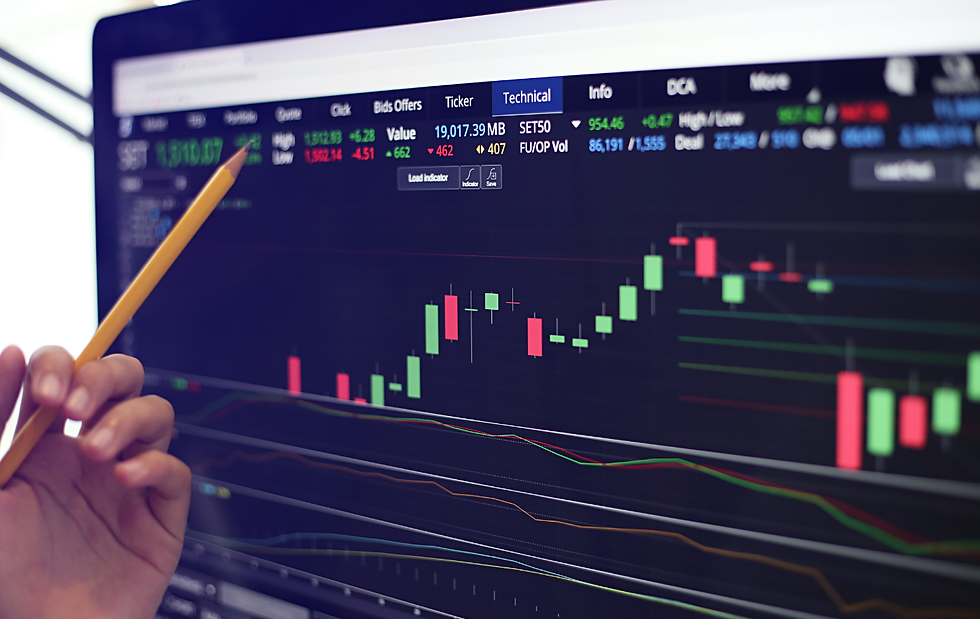Financial Word of the Day: Volume
- Larry Jones

- Sep 3
- 2 min read
Updated: Sep 24

Definition of Volume
Volume is the number of shares (or contracts) traded in a security during a set time period (minute, day, week, etc.). It tells you how busy the market was for that ticker. More trades = higher volume.
Why You Should Care
Confidence check: Price moves on high volume have more conviction than moves on low volume. If a stock pops 5% on thin volume, that’s a shrug. On heavy volume? That’s a statement.
Liquidity: Higher volume usually means it’s easier to get in and out without moving the price much. Tight spreads, fewer headaches.
Volatility hint: Spikes in volume often show up around news, breakouts, or breakdowns—moments when the crowd decides to act.
Plain-English Example
Imagine ABC stock closes at $20.
On Monday it rises to $20.60 with 1 million shares traded.
On Tuesday it rises to $21.20 with 15 million shares traded.
Tuesday’s move carries more weight because more buyers (and sellers) showed up. Price + participation = stronger signal.
How To Use It (Fast and Practical)
Confirm the move: Breakout above resistance? Look for a volume surge versus its normal level (its average). Heavy volume says, “This isn’t just a head fake.”
Spot fakes: Big price move on light volume? Be cautious—fewer participants may mean the move doesn’t stick.
Compare to “normal”: Check average daily volume (like the 20-day average). Today way above average? The market’s paying attention.
Relative Volume (RVOL): RVOL > 1.0 means trading activity is above normal for that time of day. Handy for day and swing traders.
Pro Tip (Keep It Simple)
You’ll hear about indicators like On-Balance Volume (OBV) or Accumulation/Distribution. They try to translate volume + price into trend strength. Useful, but you don’t need fancy tools to start—just watch for volume expandingwhen price moves in your trade’s direction.
Watch-Outs
News and earnings: Volume naturally explodes. Don’t assume every big-volume move is the start of a new long-term trend—sometimes it’s just event noise.
Illiquid names: Low-volume stocks can jump around more and have wider bid-ask spreads. That can quietly tax your returns.
Talk Like A Pro
“Yeah, it broke above $50, and volume was 2× the 20-day average. That tells me buyers really showed up.”
Bottom Line
Price tells you what happened. Volume hints at how many people cared. When price and volume agree, your odds improve. When they disagree, slow down and look twice.






Comments